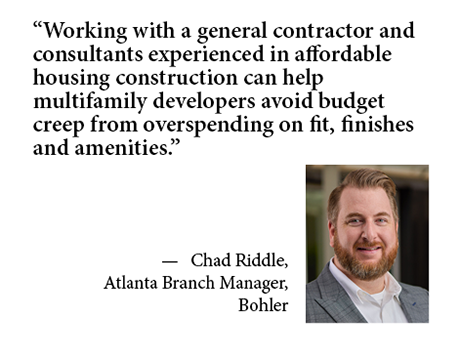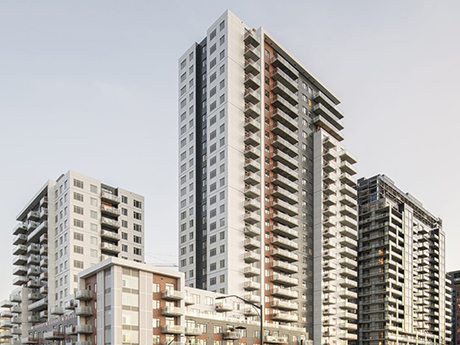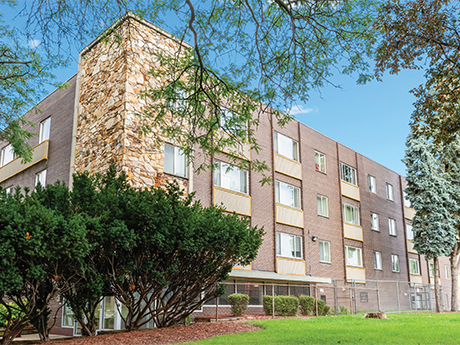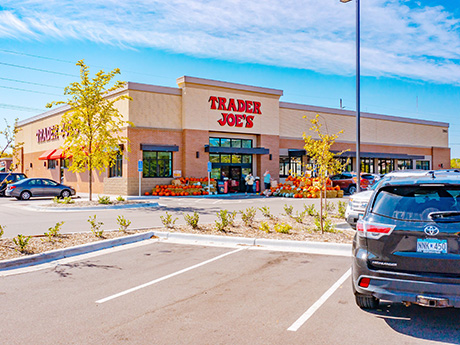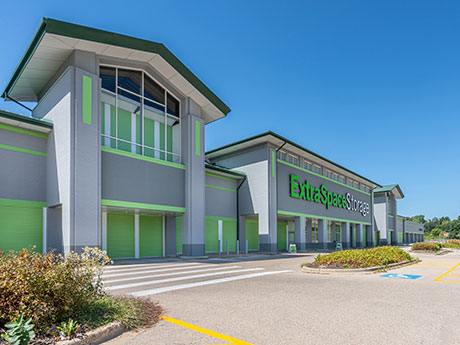By Derrick Barker, CEO and co-founder of Nectar It’s a hard time out there for commercial real estate. The main impact of the Federal Reserve’s interest rate hikes is that capital is harder to come by. That has resulted in credit standards tightening and fewer transactions happening in the market; according to CBRE, commercial real estate sales volumes were down 54 percent through the third quarter of 2023 on a year-over-year basis. As has been reported thoroughly, this will be a problem for commercial borrowers that are not well-positioned. In terms of how we got here, in 2021 and 2022, many investors purchased properties at high prices, using two- and three-year bridge loans. They underwrote these deals with aggressive rent growth and price appreciation assumptions, which were occurring in real time, matched with cheap capital and allowed for record prices. Now these investors have to find ways to meet their obligations, which they took on by promising to achieve these aggressive assumptions. When their short-term bridge loans come due, they will have to refinance or sell their properties in an environment where capital is scarce and expensive, if available at all. Meeting their mortgage and investor obligations will be difficult …
Features
By Jeff Shaw ANNAPOLIS, Md. — The occupancy rate for private-pay seniors housing rose 50 basis points to 85.6 percent in the first quarter of 2024, according to data from NIC MAP Vision. It’s the 11th consecutive quarterly increase in occupancy as the industry continues to recover from impacts of the COVID-19 pandemic. The occupancy figure marks an increase of 780 basis points from the pandemic low of 77.8 percent in second-quarter 2021, but still just shy of the pre-pandemic mark of 87.1 percent in first-quarter 2020. NIC MAP Vision is a product of the National Investment Center for Seniors Housing & Care (NIC), an Annapolis-based nonprofit firm that tracks industry data gathered from 31 primary metropolitan markets. Private-pay seniors housing comprises independent living, assisted living and memory care. Net absorption in the first quarter totaled roughly 5,000 units, a more than 40 percent increase over the level of absorption in the first quarter of 2023, according to NIC. “The continued upward climb of occupancy along with strong absorption levels supports the NIC forecast of returning to and surpassing the pre-pandemic occupancy levels sometime in 2024,” says Lisa McCracken, NIC’s head of research and analytics. Construction starts increased slightly from …
With elevated prices on everything from land to debt financing, insurance, building materials and labor, developers face an uphill climb attempting to pencil out multifamily projects at a profit. That’s why in 2024, developers are opting for practical and convenient amenities over luxury and choosing builder-friendly suburban locations over complex urban sites. And with diminishing room to raise rents on market-rate apartments, many investors and developers are shifting their attention to affordable and workforce housing, where incentives offset some expenses and, ideally, help position projects to deliver positive returns. “Market-rate developers in our region are starting to change their model to embrace more of an affordable product,” confirms Chad Riddle, Atlanta branch manager at Bohler. “Unfortunately, that puts them behind the eight ball because they may not know the tricks of the trade and they are competing with affordable housing developers that already know the business and are thriving.” There is no single strategy to pencil out a profitable multifamily project, but developers are achieving success by sticking to proven, cost-effective design elements and amenities, avoiding costly missteps and cutting down unnecessary spending throughout the development process. Drawing on affordable housing specialists and other in-house experts, Bohler helps clients avoid …
At first blush, 2023 looks like a bad year for seniors housing property sales. Total transaction volume fell 23 percent to $10.6 billion, the sector’s lowest mark in over a decade, according to data from MSCI Real Assets. “I’m not surprised to see transaction volume down from 2022,” says Kelly Sheehy, senior managing director of Artemis Real Estate Partners. “The combined impact of declining asset values, scarcity of financing for new acquisitions and lender extensions for underperforming assets has kept sellers from listing assets and have prevented levered buyers from acquiring.” MSCI’s data is based on independent reports of property and portfolio sales of $2.5 million and above. The numbers include both private-pay seniors housing and skilled nursing care, but not active adult properties. The factors limiting seniors housing transaction volume have affected all real estate asset classes. As far as property acquisitions go, seniors housing was one of the most consistent property sectors in the United States in 2023. Commercial real estate sales across the country were down 51 percent last year, and the two hardest hit sectors were office (sales fell 56 percent) and multifamily (sales fell 61 percent), according to MSCI. What’s more, seniors housing was the …
By Antonio Marquez, managing partner, Comunidad Partners Amenities are important when it comes to renter appeal. However, what residents want from their apartment complexes is based on different issues, like socioeconomic status. Indeed, a resort-style pool, yoga rooms and fitness centers are nice. But residents at properties owned by Comunidad Partners, an operator of workforce housing communities across Sun Belt markets, want more than these features in their community. To understand our residents — our customer base — we asked them questions, tried programs and obtained feedback. From this, we determined that our residents’ top three concerns were health, community safety and managing finances. However, expense management didn’t involve debt restructuring or financial literacy. Instead, access to the financial system was the issue. Thanks to this feedback, we’ve developed and are implementing programs at two of our properties in Texas — Villas at Alameda in Fort Worth and the Villas at Shadow Oaks in Austin — to help residents access financial services like high-interest savings accounts. These intangible amenities help build and enrich communities while strengthening resident retention and other operational factors that benefit investors. Sensing Residents’ Priorities In determining the right amenities to support residents, it’s essential to understand …
Strong Rent Growth, Stabilizing Interest Rates Could Spur More Student Housing Transactions in 2024
by Katie Sloan
Student housing’s strong occupancy rates and rent growth stand out as a bright spot when compared with the rest of commercial real estate sectors, many of which turned in a lackluster performance over the past year. Student housing rental rates at the nation’s top 175 universities increased an average of nearly 8 percent in the 2022-2023 academic year while occupancy in the fall of 2023 was 150 basis points higher than the average occupancy rate over the five preceding falls, according to Berkadia’s 2023 Student Housing Pipeline Report. Pre-leasing heading into the 2024-2025 academic year surpassed 40 percent in December, according to RealPage, and observers expect effective rents to increase an average of around 10 percent compared to around 9 percent in the 2023-2024 period. Meanwhile, fewer lenders are willing to provide construction financing, which is slowing the development pipeline. Developers could add 48,000 beds in 2024, an increase of 11 percent over 2023, but new supply is projected to decline steeply to 28,190 beds in 2025, Berkadia reports. Those metrics, along with growing enrollment at many top universities, are fueling student housing investment demand. The problem, of course, is that student housing faces the same challenges as other property categories …
Affordable Housing Crisis Prompts Search for Answers from Local, State and Federal Governments
by Jeff Shaw
One step forward, one step back could easily be the motto for affordable housing development this year. Experts are hopeful a more stable interest rate environment will bolster transaction activity in 2024. At the same time, rising insurance costs, supply-chain hiccups and property staffing issues are forcing developers and investors to proceed with caution in the affordable housing sector. The one-step-forward theme also applies to the legislative arena. The Tax Relief for American Families and Workers Act of 2024 contained Low-Income Housing Tax Credit (LIHTC) provisions that would have incentivized developers to build more housing for extremely low-income renters. The act passed the U.S. House of Representatives in late January and is headed to the Senate, though the National Low Income Housing Coalition (NLIHC) reports that the major reforms to LIHTC were left out of the bill. These speedbumps aren’t mere bureaucratic headaches. Some experts say they stand in the way of keeping many Americans safe and secure. According to NLIHC, the United States is short 7.3 million rental homes that are affordable and available to renters with extremely low incomes, which is defined as either the federal poverty guideline or 30 percent of their area median income (AMI), whichever …
The emergence of generative artificial intelligence (AI) promises to greatly expand the property industry’s reach and abilities. Generative AI can offer suggestions, compile reports and create various types of content, ranging from video to software code. In the commercial real estate world, generative AI has the potential to harness myriad information to help owners, managers, lenders and investors assess portfolio performance, uncover operating risks and identify opportunities, among other activities, says Jeff Salladin, a managing director with Dallas-based private debt fund Revere Capital. But companies need to begin preparing for it now, he adds. “Commercial real estate can be slow to change — it wasn’t that long ago that mortgage brokers were sending us deals via overnight mail,” observes Salladin. “But whether they’re analysts or leadership teams, someone in your shop should be dipping their toe in the water and testing out AI.” Salladin also points out the need to proceed cautiously with this new technology as it evolves. Humans with expertise need to review what AI generates for the commercial real estate field. AI can narrow the focus of many tasks but cannot substitute for human reviewers or the human ability to critically apply information gleaned. AI Benefits Salladin …
Developers and owners of net lease properties have been used to receiving high prices for their assets — fueled by low debt costs for buyers — over the past decade. With rising interest rates, that has changed. Cap rates have been rising and capital is harder to obtain, be it for new net lease development or acquisition of existing assets. That has narrowed the demand, resulting in a lower sales volume over the past year. The volume of single-tenant net lease investment sales was down about 34 percent in 2023 compared to 2022, according to Northmarq’s fourth-quarter 2023 Market Snapshot for Single-Tenant Retail. The average cap rate, meanwhile, rose from 5.62 percent in 2022 to 6.14 percent in 2023. Development of new single-tenant net lease deals is stymied by access to capital, with many regional banks — the lifeline of small developers — on the sidelines. Shopping Center Business interviewed a number of executives in the net lease sector, and studied research from leading firms for our annual overview of the single-tenant net lease property sector. Dealflow and Trends While deal velocity is down, deals are still happening. Today, deals are much more individualized, and both parties usually have to …
Nearly one-fifth of Americans rent self-storage space, according to a recent study conducted by StorageCafe, an online platform that provides storage unit listings across the nation. Owners and operators of the property type are keen to capitalize on the strong demand. According to StorageCafe, the total amount of new storage space delivered in 2023 reached 49 million square feet, up 15.6 percent from the prior year. The national average rate for a standard 10-by-10-foot, non-climate-controlled unit is currently around $122 per month. The primary demand drivers for self-storage are what the industry refers to as the four D’s — death, divorce, dislocation and downsizing. But there are additional factors at play. Matt Clark, director of operations for Skokie, Illinois-based StorSafe Self Storage, cites remote work and flexible lifestyles; decluttering and minimalism; and urbanization. “With the rise of remote work, individuals seek storage solutions for work-related equipment and belongings, while those with flexible lifestyles require storage for items not needed during travels or temporary stays,” he says. “Minimalism prompts individuals to seek storage for sentimental items or occasional-use belongings. Urban dwellers in compact spaces require storage for seasonal items or bulky furniture that doesn’t fit in their homes.” David Perlleshi, a …




